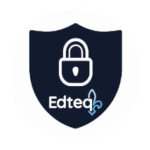Des chercheurs affirment qu’« il ne fait nul doute que l’apprentissage et la pratique de la programmation informatique favorisent le développement de compétences plus larges dans toutes les matières scolaires ainsi que dans les domaines d’apprentissage tels que la résolution de problèmes, la pensée créative et l’esprit critique. » Qu’en est-il de l’intégration de la programmation informatique dans les cursus scolaires au Canada et ailleurs dans le monde?
Le RAPPORT Journées de réflexion sur l’usage pédagogique de la programmation informatique : Constats sur l’intégration de la compétence numérique, qui a été publié en juin dernier, contient une section présentant l’état des lieux sur l’intégration de la programmation informatique dans les cursus scolaires au Canada et ailleurs dans le monde. Les informations présentées ici sont tirées de ce rapport.
Au Canada
« Dans la majorité des provinces et des territoires canadiens, les technologies de l’information et de la communication (TIC) sont intégrées de manière obligatoire au parcours scolaire dans une optique interdisciplinaire, parfois même dès le préscolaire », lit-on dans le rapport.
Au Manitoba, par exemple, le curriculum intitulé Literacy with Information and Communication Technology (LwICT) encadre le développement des apprentissages et des compétences liées au numérique du préscolaire à la 12e année. Au Nouveau-Brunswick, un curriculum semblable nommé Middle School Technology Education oriente l’intégration de l’informatique, qui se fait à partir de l’école intermédiaire anglophone.
Dans ces deux curriculums, l’apprentissage de la programmation occupe une place superficielle ou secondaire puisque les concepts qui y sont inscrits sont très variés, allant du comportement éthique sur le Web à l’utilisation des logiciels de traitement de texte.
Ainsi, dans la plupart des provinces et territoires, « l’apprentissage explicite de la programmation et des concepts qui la sous-tendent est surtout l’affaire des deux ou trois dernières années du secondaire, sous la forme de cours optionnels ». Par exemple, en Saskatchewan, les cours Computer Sciences sont offerts aux élèves de 11e et 12e années au même titre que les cours de physique ou de chimie. En Alberta, une variété de cours peut être choisie par les élèves du programme Career and Technology Studies.
« De façon générale, l’intégration des TIC tout au long du parcours scolaire vise davantage le développement global de l’élève afin qu’il devienne un citoyen autonome à l’ère numérique. Les cours spécialisés d’informatique et de programmation, optionnels dans les dernières années du secondaire, s’inscrivent dans une optique beaucoup plus utilitariste et technocratique ».
Ailleurs dans le monde
Ailleurs dans le monde, de nombreux pays ont aussi commencé à intégrer le développement de la compétence numérique en général et de la programmation en particulier à leur cursus scolaire.
Aux États-Unis, l’implantation d’un curriculum obligatoire jusqu’à la 12e année, K12 Computer Science, « vise à doter les élèves de compétences informatiques telles la capacité de créer des programmes informatiques, des simulations ou encore des systèmes robotiques ainsi que la capacité de les réparer advenant un problème ».
Le Royaume-Uni a également opté pour un cours obligatoire qui vise notamment « le développement et l’application des compétences analytiques de résolution de problèmes, de conception et de réflexion informatique ancrée dans une vision de protection de la vie privée ».
En Nouvelle-Zélande, les compétences numériques à développer font aussi partie d’un cours obligatoire dès la première année du primaire. « Au primaire, les compétences se développent de façon interdisciplinaire et s’orientent vers des pratiques de design. […] À la fin du secondaire, les élèves comprennent les algorithmes et sont capables de généraliser les algorithmes connus et de les appliquer. Ils peuvent également implémenter des algorithmes en créant des programmes plus complexes qu’ils sont en mesure d’expliquer et d’utiliser une approche organisée pour les tester et les déboguer. »
En Belgique, les compétences numériques à développer par les élèves sont aussi obligatoires et interdisciplinaires. À la fin du primaire, les élèves doivent être capables de produire et de traiter des contenus multimédias et de concevoir un algorithme ou un programme pour résoudre un problème simple. À la fin du secondaire, ils devraient pouvoir produire collaborativement des contenus multimédias, en plus de pouvoir porter un jugement critique sur les raisons d’être et les conséquences induites des algorithmes, notamment en matière d’IA ou encore d’objets connectés.
Vous vous intéressez au sujet? Nous vous recommandons fortement de consulter les annexes 22, 23, 24 du rapport complet, qui offrent une vue d’ensemble de l’éducation au numérique à l’échelle canadienne ainsi que les liens vers les différents curriculums. L’annexe 21 propose quant à elle une vue de l’état de l’enseignement du numérique et de la programmation à l’échelle internationale. Enfin, l’annexe 26 fournit un exemple de progression des apprentissages pour la programmation (celle du Manitoba).
À voir :
- Le rapport complet est disponible en ligne sur le site Web du ministère de l’Éducation du Québec.
- Le numéro du printemps 2022 du magazine École branchée : La programmation informatique : comment développer cette habileté?




 Recevez l'Info #DevProf et l'Hebdo pour ne rien manquer des nouveautés de l'École branchée!
Recevez l'Info #DevProf et l'Hebdo pour ne rien manquer des nouveautés de l'École branchée!




